How To Photoshop Pictures For Travel Instagram
Photoshop Editing Tips
The magic of Photoshop is something we are all familiar with. You've either seen fashion magazine images edited inside an inch of reality, fake backdrops, intense skies that were never really that dramatic or something simple like text written over a photo.
When it comes to travel photography information technology's best to keep editing simple and realistic. Travel is about the experience, the journey, people you encounter along the style and the astonishing places you come across. Who wants to misconstrue that reality?
What you tin can practice though is make it only a fiddling flake prettier.
There is no damage in creating travel photos that expect professional person and in this mail service I'll be showing you a few easy tricks to make your photographs pop by using Adobe Photoshop (totally meant to rhyme!).
Firstly, if you lot don't want to commit to the total version of Photoshop straight upward you can take a 30 twenty-four hours trial to test information technology out or pay per month! I like to employ both Adobe Lightroom and Photoshop and so volition be sharing my Lightroom techniques in a split mail soon.
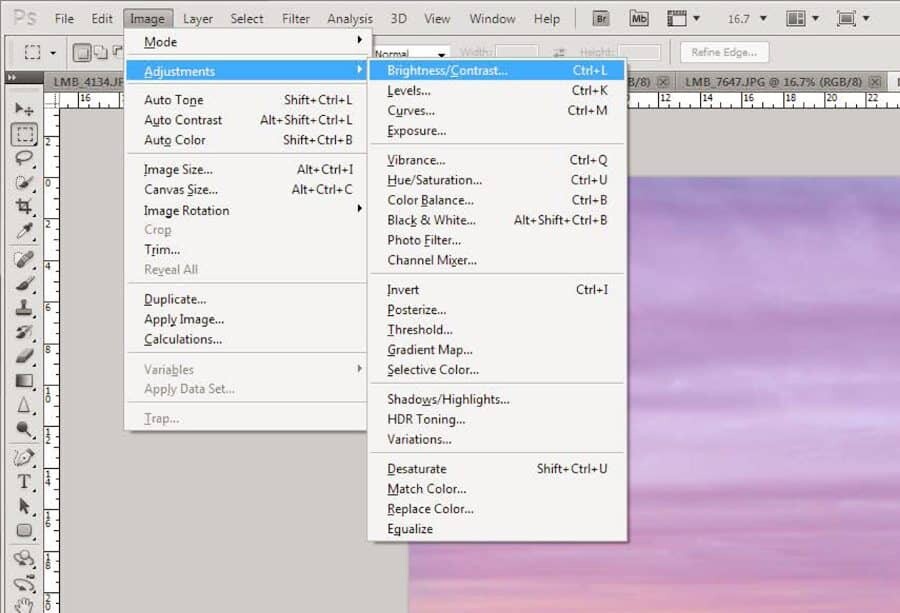
Y'all'll find a few tools I mention below in the Image>Adjustments menu of Photoshop
Before you read any farther my biggest tip of all is this. Before editing any photographs ALWAYS relieve the original version twice in your estimator and so you don't accidentally save a badly edited image. Working from the copy volition permit yous to test editing techniques and adjustments without worrying almost going too far and ruining the original.
Technique Ane: Using Curves
For cityscapes or street shots you want to keep it real but excite the viewer with a scene that makes them dream of visiting. This image of Rome is lovely but the reality felt so much more alive with colour and mood, something the Curves tool tin can create with simply a few adjustments.
You volition discover the Curves tool in the tiptop carte under Image > Adjustments > Curves. In the pop up box prepare the preset to Custom, switch the channel to RGB and and so using your cursor arrow pull up the piddling line in the graph to suit the effulgence/darkness and tones of your paradigm. Using the RGB mode volition adjust all of the colours at one time and then you can brighten or darken at your leisure. Be careful when using curves because they can throw your paradigm way off residual and always grab the line correct in the middle of the graph for an fifty-fifty tone. Play effectually to see but how crazy things tin look, grabbing the line a few times will alter the highlights, mid tones and shadows… don't be scared if you lot suddenly see the 70's retro era return…but abolish and offset again.
Irresolute the curves channel from RGB to Blood-red, Green or Blue allows you to adjust the tones of each individual colour palette and the Cerise in particular is a great way to add warmth to your prototype. For this prototype I used the Red to increase the tones of the Roman buildings helping to differentiate them from the fountain. To ensure you don't plough the fountain red too, use the Marquee option tool to determine which parts you lot want adapted.
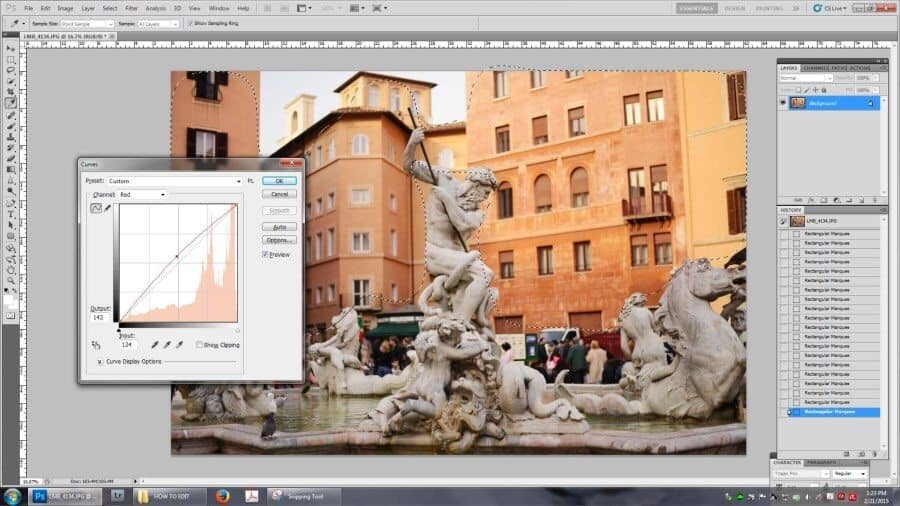
Technique Two: Choice and Inverse Selection
If you don't want to add an effect to the entire image you tin use the handy dandy choice tool to highlight an exact surface area to work on. The tool has a few options for shapes; rectangular, circular etc. Typically I merely use the rectangular selection then in the top carte du jour bar I change the feather to 222px (just a random number that works best) which makes information technology a little more than circular.
You can either select a big part of the image, for example a section of sky, or if you accept something to work around y'all tin highlight smaller sections whilst property the shift key.
Holding the shift central down and overlapping your selections will force the selection tool to create odd shapes assuasive y'all to select the space around an object.
One time yous've selected the parts yous want to piece of work on y'all can easily switch focus to the other areas without having to re-select them. In the bill of fare option titled 'Select' coil down to the one named 'Inverse', click this and information technology will automatically select the remaining sections of your epitome allowing you to work on them without disturbing the initial option.
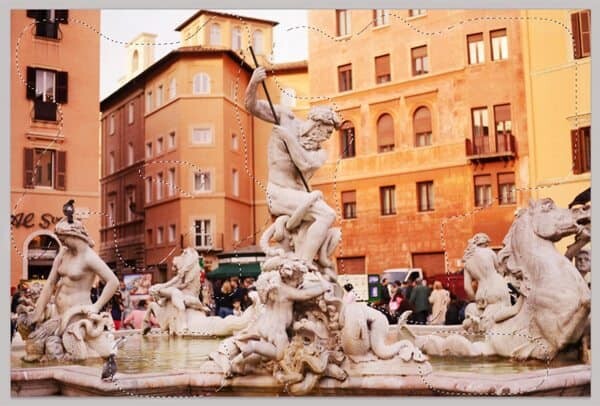
Technique Three: Contrast + Brightness
Yous'll find the contrast tool in the carte du jour under Image > Adjustments > Brightness/Contrast. This piece of cake piddling jewel only adds contrast or effulgence to your image. I know, obvious.
Using these ii techniques together adjusts the tonal range of your photograph adding highlights or shadows depending on which fashion you slide.
Normally for a standard mural image with blues, browns and green hues I'll use a tiny chip of contrast. I avert over contrasting images considering I'm non a big fan of the deep shadows with blues and blacks but information technology's completely up to personal preference. You'll notice the more dissimilarity y'all add the more defined your photo becomes which is not bad for cityscapes and enhancing the details of buildings, rocks etc.

Technique Four: Cropping
Yous won't always be in the correct place at the right time and standing in the all-time possible position to capture a scene. If you are, I want to travel with you! Cropping an image is merely another form of composing your shot.
While it'south always all-time to try and get information technology right in the camera to avoid cropping and loosing image quality, the crop tool tin can be a bully manner to change the viewpoint. You'll notice information technology in the tool menu on the left side of your screen.
Take this image of Lake Hawea, New Zealand for example. The original is your standard photo dimension nevertheless I didn't feel it had the wow factor because the behemothic parts of blue sky and reflecting blue water were a piddling distracting. Cropping it to a panoramic shape showcases the length of the mountain range and also highlights the amazing reflection and cloud line.

You can crop to zoom in, crop to enlarge or crop to fit a certain dimension it's only a thing of adjusting the measurements in the tool bar. If you lot're posting your images online you might have already got your ain technique for creating low resolution images but in Photoshop its super simple. Before cropping always create a copy of your image in your folder so y'all don't crop the original. Open it up in Photoshop, select the crop tool, type in the exact measurements y'all desire your paradigm to be and the resolution so ingather away. For social media and my blog I use 800px wide + 300 pixels/inch resolution, probably way more than you need only I similar them to exist sharp and clear.
Technique Five: Clone and Spot Healing
These two tools are like secret weapons. They really do create magic so don't enquire me how they do it. I do even so know how to use them.
Sometimes you'll have dust on your lens or paradigm sensor, water droplets or a bug that pops up unexpectedly. The best way to remove these unwanted things from your photos is to use what I phone call the Bandaid button, technical name, Spot Healing Castor. It does exactly what its name suggests. Puts a little bandaid over the trouble surface area and fixes the spot.
You can also use the Clone tool to remove annihilation yous don't want in your photo. Cloning allows you to cull a pocket-size ready of pixels or part of your photo, re-create it then place it somewhere else.
Simply click the ALT key to select a slice of your photo and the Clone tool will then clone that piece to wherever you want. Yous can utilize the bandaid tool for this too. It works all-time though when there is infinite around the person or subject you wish to remove…it collects pixels from the area around so if yous've got a white beach and a person in the center, click the bandaid over the person and it volition easily take the sand and cover the person up while yous lookout in amazement.
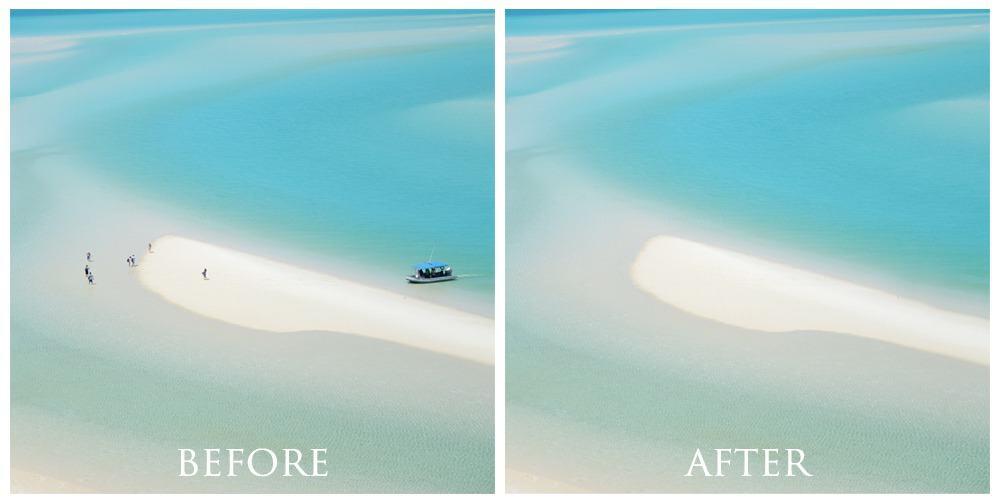
Technique 6: Dodge and Burn Tools
Located in the tool bill of fare on the left side of Photoshop you'll observe the Burn Tool and the Dodge Tool. Both are super handy to brighten or darken a smaller section of your prototype. If yous desire to increase the effulgence of a face for instance, utilize the Contrivance Tool to gently brighten the tones and exposure. It's a picayune like using a paintbrush and is nifty for more intricate piece of work.
If you've accidentally overexposed your photo yous can use the Burn Tool to darken sections and bring dorsum more than particular. You can choose the size of the tool and piece of work on tiny sections like under the middle, or make the tool bigger to work on one-half the photograph at in one case for a section of heaven.
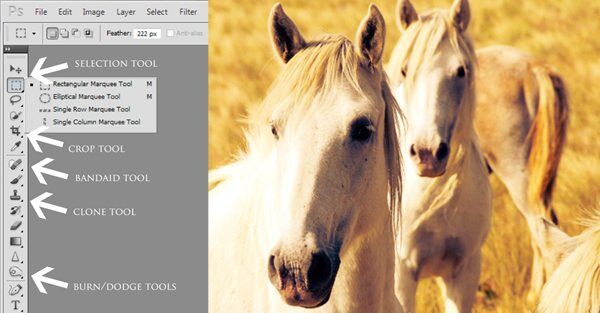
The tool menu for editing is found on the left side of the window.
What tools to utilize for…
Underwater Images – Unless you are using a loftier quality digital SLR underwater your images volition probably be a little more faded than reality. The blue tones of the underwater world can diminish when using smaller hand held waterproof cameras so be sure to add a little saturation or blue tones using the curves technique.
Urban center Scenes – Calculation some contrast and brightness to a city scene always makes it pop. Obviously it depends on the scene but your regular street with roads and buildings volition look amazing once you add some contrast or highlight the street with some curves/brightness.
Sunset Photos – Using the Curves tool and adjusting the cherry tones will work wonders on sunset photographs. By using the selection tool to select the sky section of the image, you can bring out the rich red hues and enhance the photo. If yous've ever looked at an incredible sunset only to have a photo and have it turn out dull and boring, the curves tool is your friend. Add a sprinkle of saturation if you feel the need but avoid going over the top, think of your dusk sky equally a tan…too much looks fake. Information technology's all about enhancing reality, not distorting it.

In the Image > Adjustments menu of Photoshop y'all'll observe lots of useful tools such as Saturation/Hue, Vibrance, Black & White, Shadows/Highlights etc. Have fun exploring and testing out all of the tools to see what works all-time for your style of photography.
As always, if you've constitute these tips useful let me know in the comments below! I would dearest to encounter your images so experience free to go in touch on via email at hello@thewanderinglens.com or share on Instagram using the hashtag #thewanderinglens.
*This is not a sponsored post or product review, I'm simply sharing some of my editing techniques.
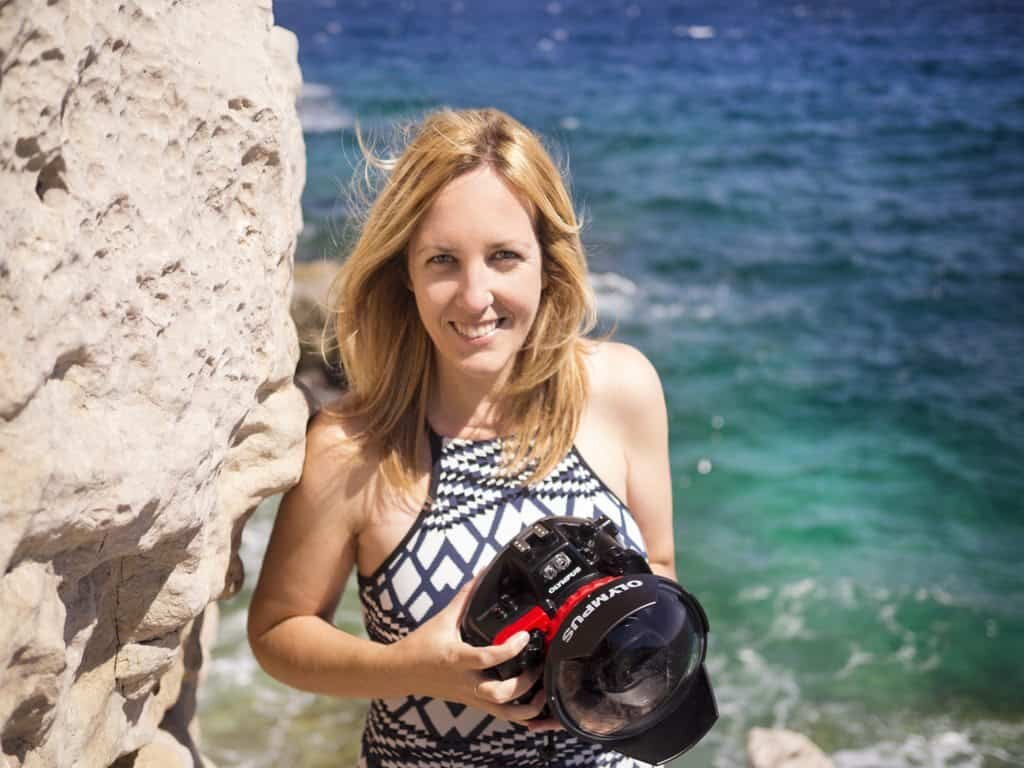
How-do-you-do! I'one thousand the founder and photographer backside The Wandering Lens.
With 14+yrs experience as a professional person travel and landscape lensman, all advice found on this site is from my personal experience on the road. I hope it's useful for your own travels and would beloved to hear in the comments near your trips and experiences around the world.
Source: https://www.thewanderinglens.com/how-to-edit-your-travel-photos-in-photoshop/
Posted by: baronmoreary.blogspot.com

0 Response to "How To Photoshop Pictures For Travel Instagram"
Post a Comment